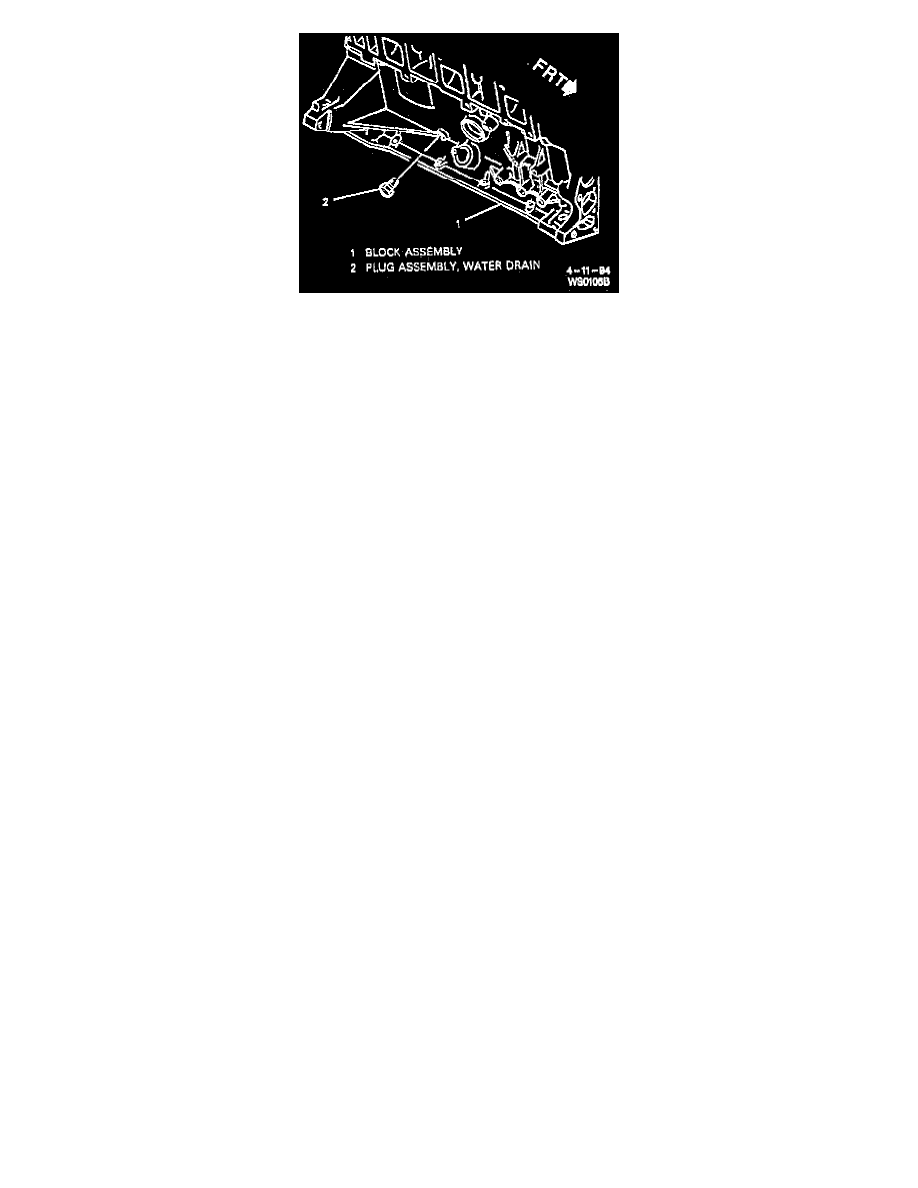Cutlass Supreme V6-3100 3.1L MFI VIN M (1994)

^
Remove both engine block drains. The front engine block drain is located between the starter and the engine oil filter. The rear engine block
drain is located by the engine crank sensor.
8. Allow the coolant to drain completely.
IMPORTANT: Dispose of used coolant in a proper fashion, i.e., in a used coolant holding tank. NEVER POUR USED COOLANT DOWN
THE DRAIN! Ethylene glycol antifreeze is a very toxic chemical; disposing of it into the sewer system or ground water is both illegal and
ecologically unsound!
INSPECT
^
The drained coolant: If the coolant is discolored. flush the cooling system; If the coolant appearance is normal. continue with the filling procedure.
FILLING
1. Close the radiator drain valve. Reinstall all engine block drains.
2. Install the coolant recovery reservoir. Flush the reservoir with clean water, drain and reinstall.
CAUTION: Under some conditions, the ethylene glycol engine coolant is combustible. To help avoid being burned, DO NOT spill
antifreeze or coolant on the exhaust system or hot engine parts.
NOTICE: Fill the cooling system using GM approved recycled or new Ethylene/Glycol coolant antifreeze meeting GM Specification
1825/1899-M. To ensure sufficient engine cooling, freezing and corrosion protection, maintain the protection level at -37°C (-34°F) or lower. Use
a solution that is no more than 70 percent antifreeze.
3. Slowly fill the cooling system through the radiator neck using the following procedure:
^
If the coolant system has been flushed, first add 100 percent ethylene glycol in the amount listed for the appropriate engine application. Then
slowly add clean water to the system until the level of the coolant mixture has reached the base-of the radiator neck. Wait for two minutes and
recheck the level of the coolant mixture, add clean water if necessary to restore the coolant mixture level to the base of the radiator neck.
IMPORTANT: When refilling the engine cooling system, add two engine coolant supplement sealant pellets, GM P/N 3634621 or equivalent,
and GM approved recycled or new Ethylene/Glycol coolant antifreeze meeting GM Specification 1825/1899-M.
^
If the cooling system is being refilled ONLY (no flush), a 50 percent ethylene glycol and 50 percent clean water mixture should be used to fill
the system. Fill the system until the level of the 50/50 mixture has reached the base of the radiator neck. Wait two minutes and recheck the
level of the coolant mixture, add a 50/50 ethylene glycol/water mixture as necessary to restore the coolant mixture level to the base of the
radiator neck.
4. Install the radiator cap making certain the arrows line up with the overflow tube.
5. Close all air bleeds. DO NOT over torque the air bleed valve. The air bleed valve is made out of brass.
6. Fill the coolant reservoir with a 50 percent ethylene glycol and a 50 percent clean water coolant mixture. The proper amount of this mixture to be
installed into the coolant reservoir is listed below:
^
Add 1.7 liters (1.8 quarts) of a 50/50 mixture of ethylene glycol and clean water to the coolant recovery reservoir.
CAUTION: The low coolant indicator lamp may come on after this procedure. After operating the vehicle so that the engine heats up
and cools down three times. If at any time the "TEMP" warning indicator comes on, immediate action is required.
INSPECT
^
Inspect the freeze protection of the engine coolant after the engine heats up and cools down three times using a refractometer or a
thermohydrometer to ensure proper freeze -37° C (-34° F) protection. Obtain the coolant mixture for the inspection from the vase of the radiator
